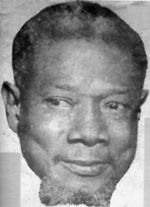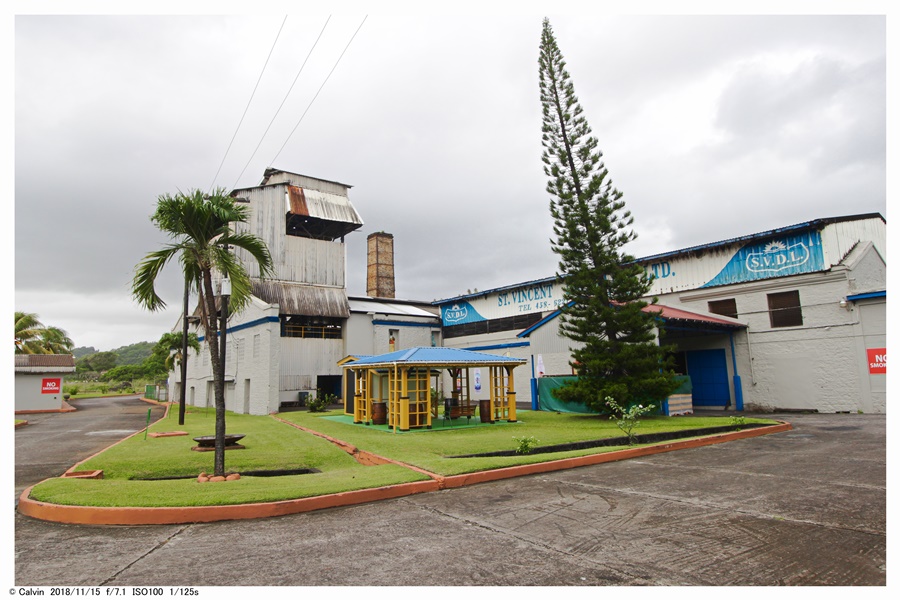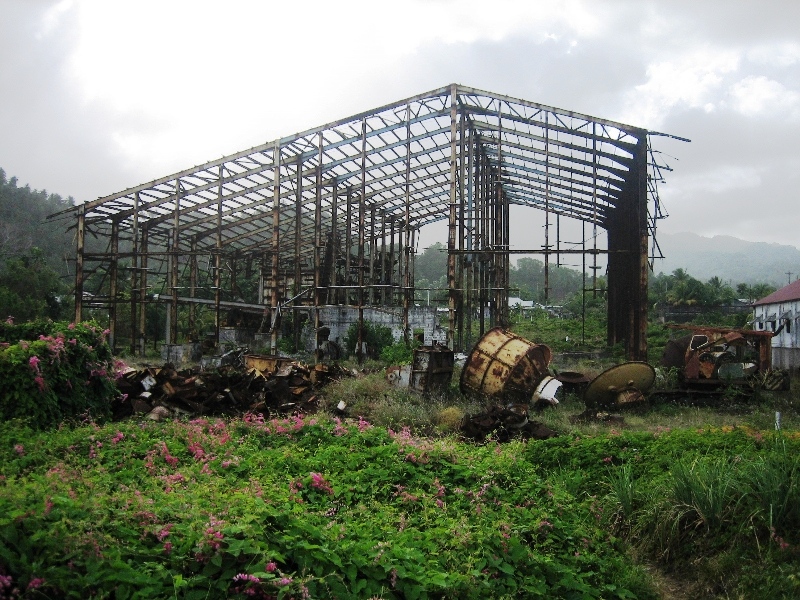
I was fortunate enough to grow up in a time when Georgetown, was for a while a prosperous town. Prosperous in the sense that it had an employment outlet, "The Mt Bentinck Sugar Factory". Although I was a little boy in the early 1960s, I can not remember hearing about or seeing any of the conflicts between workers and plantation owners. Burning down cane fields was a notorious act and I can recall seeing smoke filled skies on various occasions as a boy, but not knowing what was the cause.
The Factory had become the bread line for the people and suddenly one day it was gone, just like that. Many opinions has been formed over the years as to Who and Why. I wanted to find out more about this great constitution that many of us have seen, heard about or had relatives that worked there. A short summary of my findings can be read below.
It was a sudden and unexpected surprise when management decided to pull the plug on operations at the Mt Bentinck sugar factory, on 16th March 1962. This action was to have a catastrophic effect on the people of Georgetown, and on the island as a whole. The irresponsible words uttered by Joshua, would stay in the people's mind forever. But what are the facts behind the unexpected closure?
 For the greater part of the 19th century there were wide spread disturbances amoung sugar eastate workers and plantation owners which led to strikes and arson. As far back as 1862, Two hundred workers closed down operations at the Mt Bentinck estate because planters tried to cut the allowances given to workers. There were wide spread riots which led to the recall of british troop in an attempt to maintain order. The intense actitivities that surround the Mt Bentinck estate over the years always attracted special attention.
For the greater part of the 19th century there were wide spread disturbances amoung sugar eastate workers and plantation owners which led to strikes and arson. As far back as 1862, Two hundred workers closed down operations at the Mt Bentinck estate because planters tried to cut the allowances given to workers. There were wide spread riots which led to the recall of british troop in an attempt to maintain order. The intense actitivities that surround the Mt Bentinck estate over the years always attracted special attention.
There were no such things as trade unions in the early days to represent the workers in their struggle for better wages and living conditions. The planters virtually did what ever suited them, and the only way that the workers could vent their frustrations was to burn down the cane fields. This proved to be a good ploy since it was almost impossible to find the culprits.
When the first union "Federated Industrial and Agricultural Workers Union" was formed (FIAWU) by Ebenezer Joshua, it was not recognised by managers of estates from 1951-1957, which led to more strikes. When Joshua won the general election with the PPP, and formed the government in 1956, a good relation emerged between the FIAWU and the Mt Bentinck estate. There were no strikes frowm 1957 to 1961.
These were the boom times in Georgetown, life was good for many. New businesses like Edwin D Layne and Bata moved into the town. Georgetown had by now been regarded as the brightest area in the country. It not only gained its name of Sugar Town for its produce but also because life was sweet.
In February 1962, a new dispute developed. The unions wanted holidays with pay for the workers. Management was having none of it, so the FIAWA resorted to strike action. This prompted the management of the estate to bring in non union workers from other districts to work under police protection. Understandably, tensions were running high. What began as a peaceful picket line set up by the union at the factory gate, ended in violence and bloodshed, and the company called in the police on the 1st and 2nd of march 1962 seemingly to maintain law and order.
The strike escalated as factory workers were joined by cane cutters demanding a closed-shop system ( an agreement under which the employer agrees to hire union members only). The company's manager arranged a settlement after it was realised that it was costing the company too much to use cane cutters from other districts. Surprisingly the management director of Mt Bentinck estate E.A.C Hughes rejected the agreement on the grounds that the company directives were not sort. By then the workers had already returned to work, the strike was over. Then on March 16th 1962 the bomb shell came. The Mt Bentinck company decided to terminate all factory operations.
The irresponsible words of Joshua "I will turn Mt Bentinck into a graveyard" came to pass, but can he be blamed for the closure? Many people seems to think so. There are other factors which should be first considered.
" I will turn Mt Bentinck into a grave yard"
The management gave Three reasons for the closure of the factory. 1. High labour cost, 2. Deteriorating labour relations 3. Diminishing supplies of cane. However there are arguments against all three explanations given by the Mt Bentinck management.
High labour cost?
St Vincent sugar workers were one of the most lowest paid in the Caribbean. In 1956, cane cutters earned 66 cents per ton of cane reaped. Male labourers were paid 98 cents per 8 hour day and female labourers 75 cents per 8 hour day. Six years later in 1962, male labourers got $1.40 a day and female labourers $1.12 per 8 hour day. While wages were the lowest the yield per acre for sugar producers in St Vincent was the highest. On top of that the sugar industry in St Vincent was receiving major concessions from the Government. Joshua, raised the price of local sugar to accommodate Mt Bentinck. The company was also allowed to bring in new machinery free of custom duties. It was also shown that the company continually failed to declare true annual dividends which would have risked the possible withdrawal of Government subsidies.
Poor labour relations?
After Joshua's union was finally recognised in 1958, there were no strikes until the one in 1962. Industrial conflicts were peacefully settled though negotiations. On the other hand the years of greatest industrial unrest were the years of greatest prosperity for the company. As industrial dispute goes the 1962 strike was milder than many of the strikes between 1951 and 1956 in both terms of duration and violence. So why should deteriorating industrial relations be a cause for closure in 1962 when it was not between 1951 and 1956 when it was at its worst? The truth is the company was making lots of profit within that period of industrial war.
Diminishing cane supply?
Sugar cane was indeed dying and it was argued that the government, (Joshua) did not provide the necessary incentives to farmers to produce more sugar cane. But it must also be said the Mt Bentinck company ignored several of its responsibilities set out by the Jolly report. These involved (1) To investigate and distribute more varied and suitable varieties (2) The testing of cane and the improvement of the organising of deliveries (3) The rearrangement of the grinding season. Implementation of these recommendations would have meant increased revenue for the company.
In its last three years of operation the tonnage of sugar produced was much higher than in 1949-1951. Why then was this so called diminishing of supplies and all the other factors, not enough to close the factory prior to 1962?
In 1956, male labourers were paid 98 cents per 8 hour day and female labourers 75 cents per 8 hour day. Six years later in 1962, male labourers got $1.40 a day and female labourers $1.12 per 8 hour day.
Conclusion
The most likely factor for the closure was that management of sugar production by the company itself were incompetent. The company was badly run as such the making of profit became very difficult. There were directors who could not read a balance sheet therefore it became difficult to show adequate financial returns. The company was trying to run a modern capitalist enterprise as if it was a traditional slave factory and plantation. The production process in St Vincent were also inefficient and out dated.
Given such a situation it was inevitable that the company's inefficiency would have been decisive in closing the factory. Government subsidies and concessions of other kinds, masked the inefficiency and delayed the company collapse. Who ever was to blame or for what ever the reason they closed the Mt Bentinck Sugar Cane Factory, it was an event that crippled Georgetown. The scars can still be clearly seen today and they will probably never fade.
CUTLASS WAR FLARES ON ISLE (News paper report)
Shots have been fired and cutlasses used in battles between the trade unionists and sugar plantation men on this West Indian Island. Leading the trade unionist is bearded Ebenezer Joshua, the forceful Chief Minister of the tiny rum making island. His wife Ivy, also a member of the Government is reported to have led pickets in cutlass fights.
Two men have been shot and several injured in the clashes, including the Scots general manager of the sugar mill and the white president of the planter's association. The dispute have been going on for six weeks. Now the planters have called the colonial secretary in London for urgent protection.
Joshua is demanding pay increases for sugar workers and a ban on non unionists. And the union seek to drive out the owners and non unionists so that they could run the mill themselves. Joshua who is also finance minister is unable to nationalize the sugar industry, as St Vincent is a grant aided territory with an almost empty treasury.
Report from a regional Express staff reporter 1963
Disclaimer:
Most of the information on this page was acquired though research and was also adapted from the book by Edgar Adams, "The Carib Country Sugar Estates and Georgetown" which I highly recommend that you go out and buy. If you believe that anything written may not be correct please contact me so I can make any necessary adjustments. If you have a story about the Mt Bentinck factory that you would like to share please contact me.
Photo credit to Craig Heimburger
